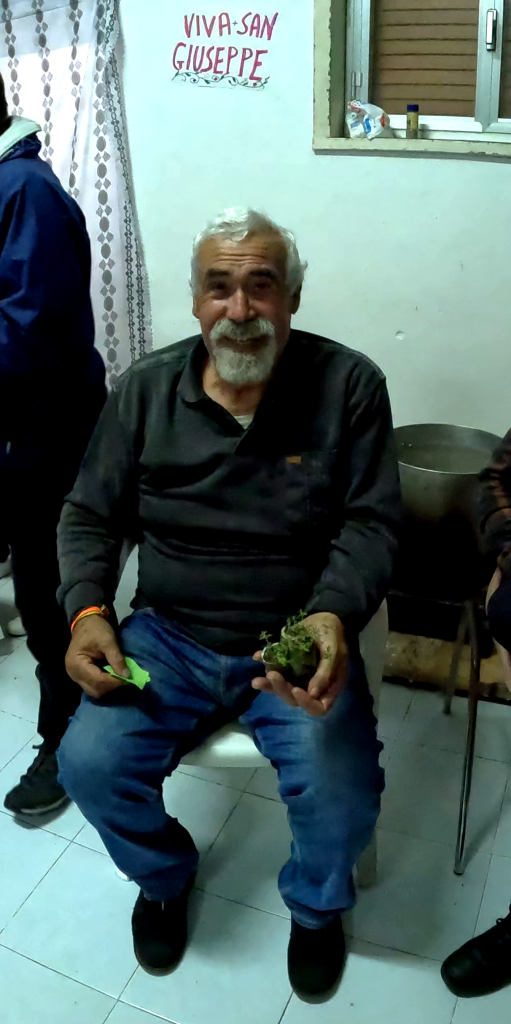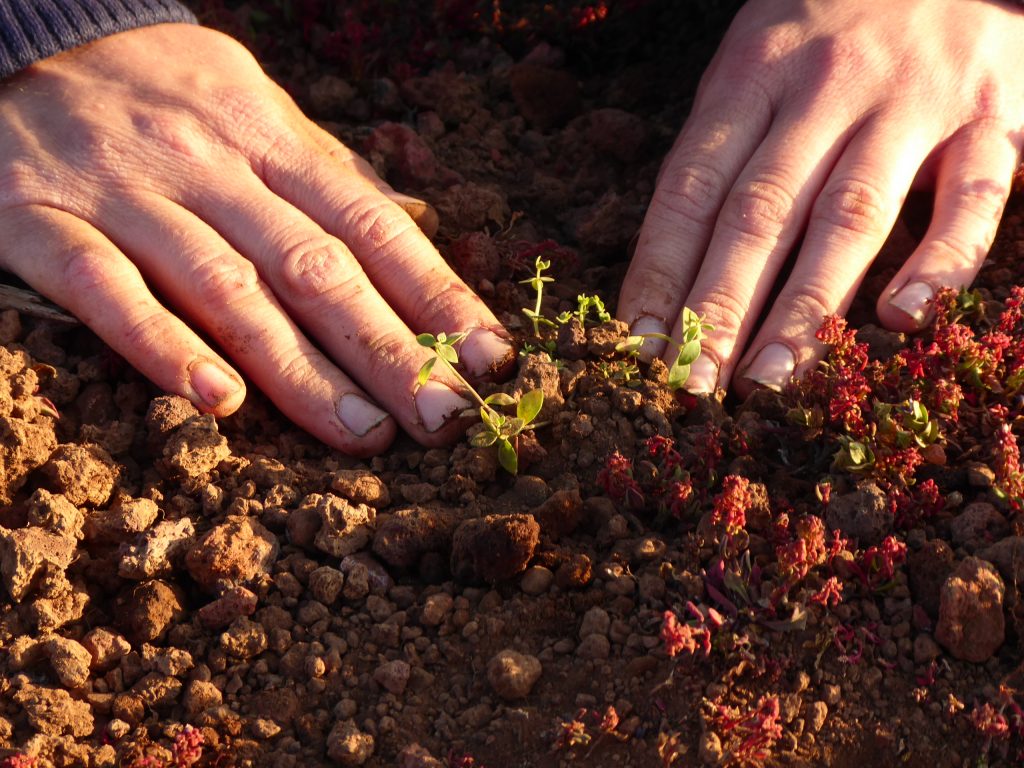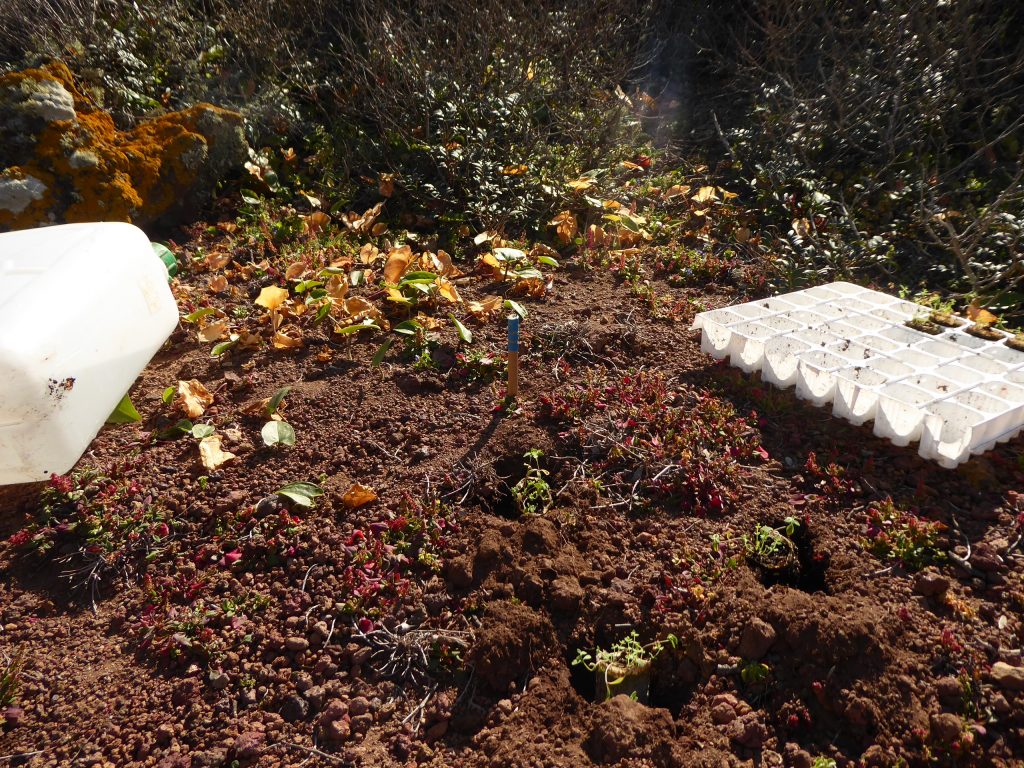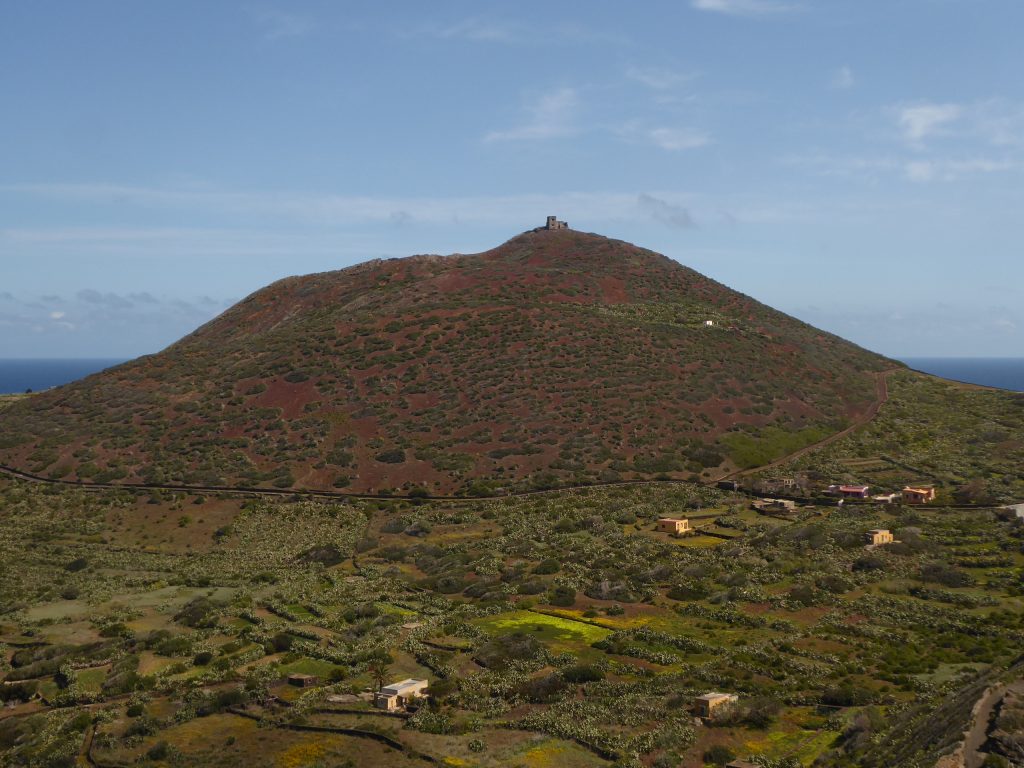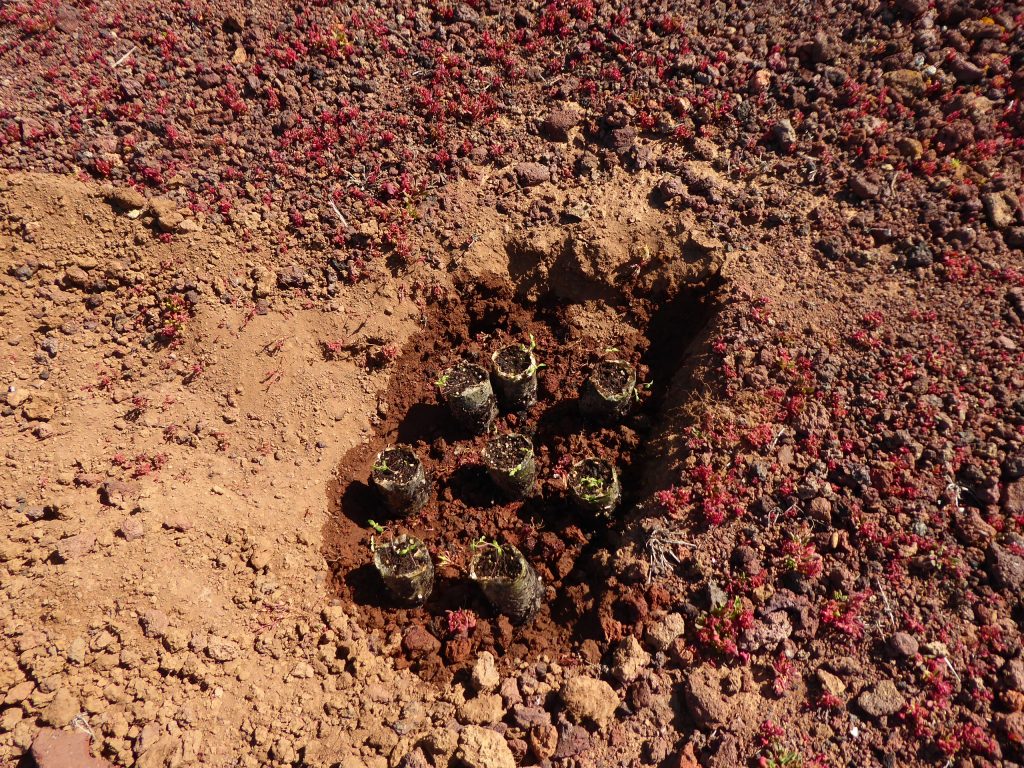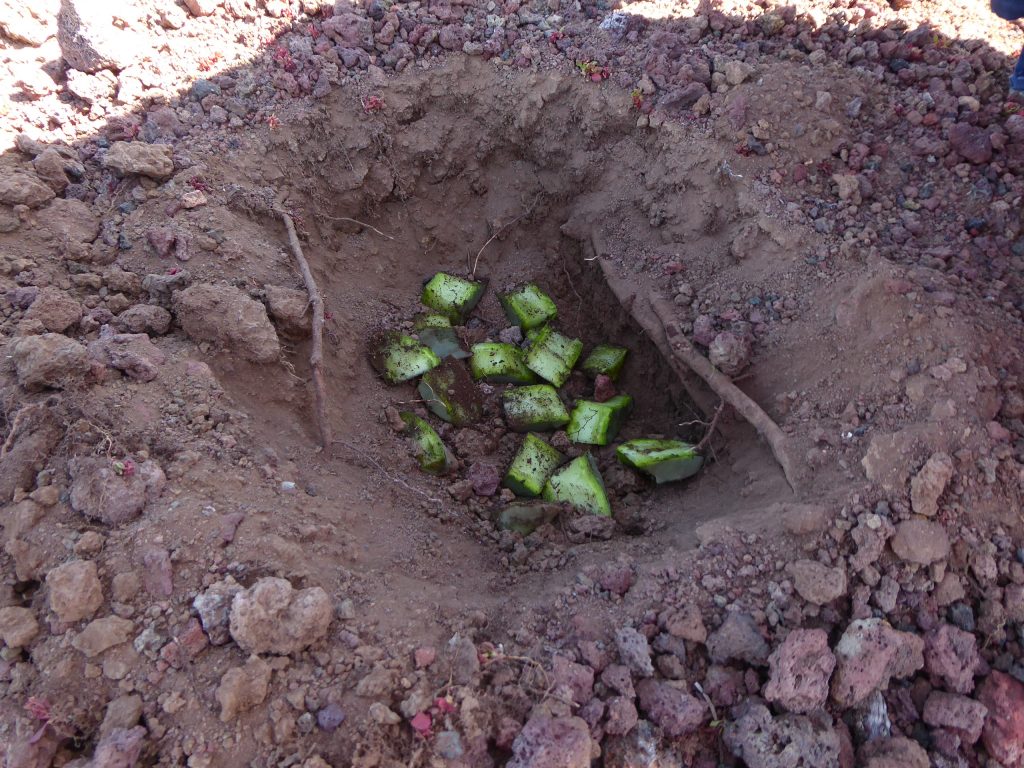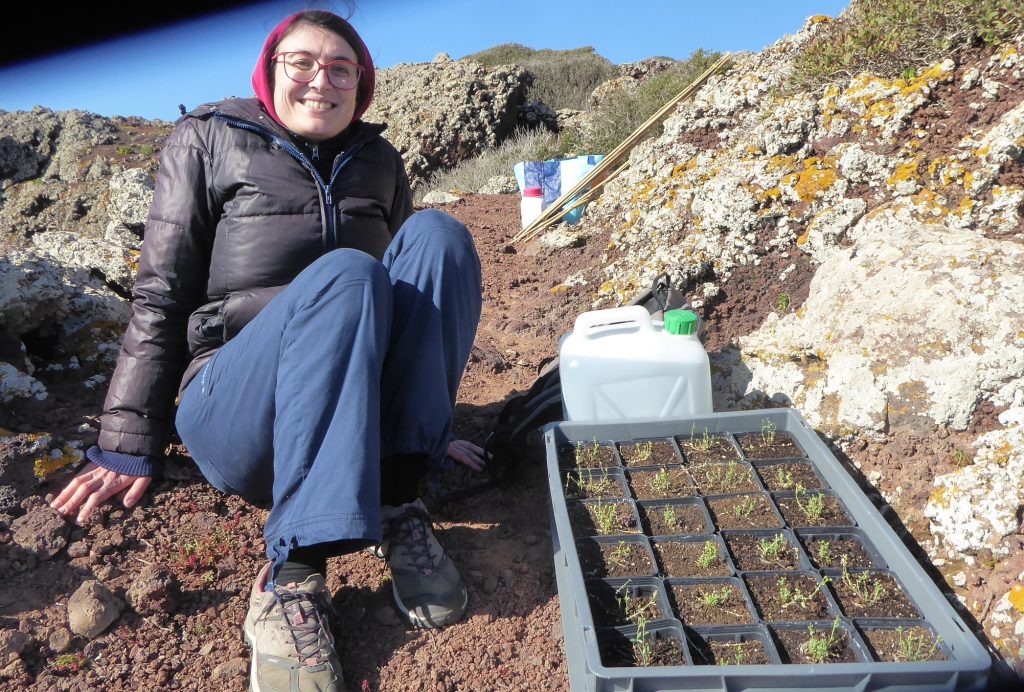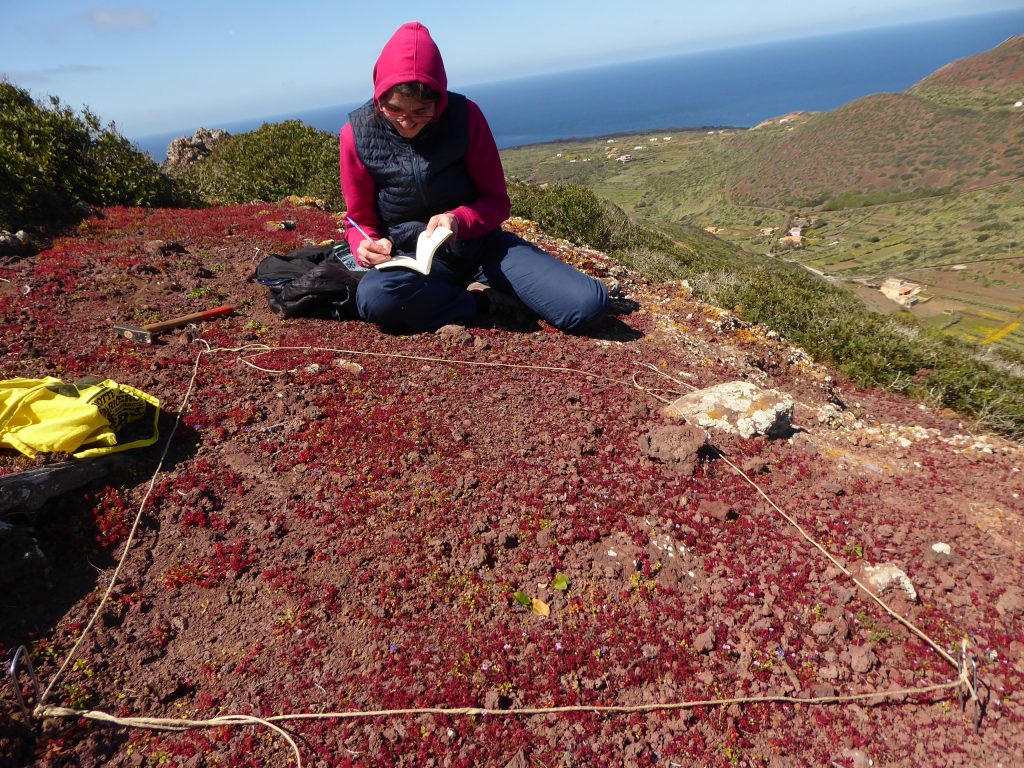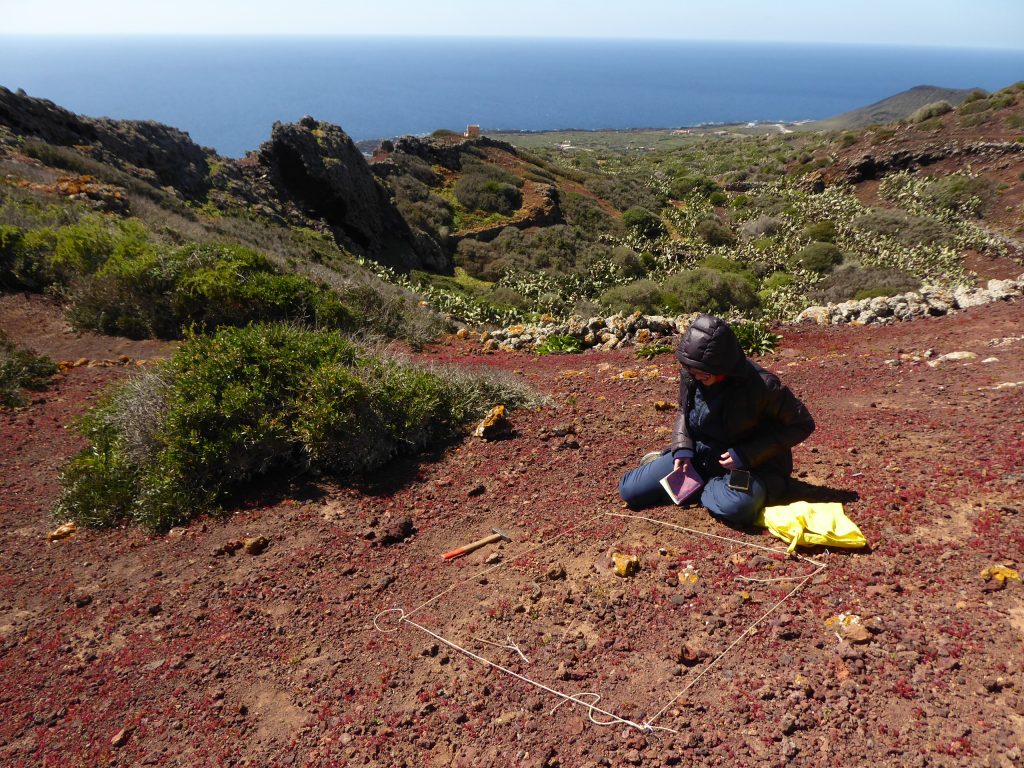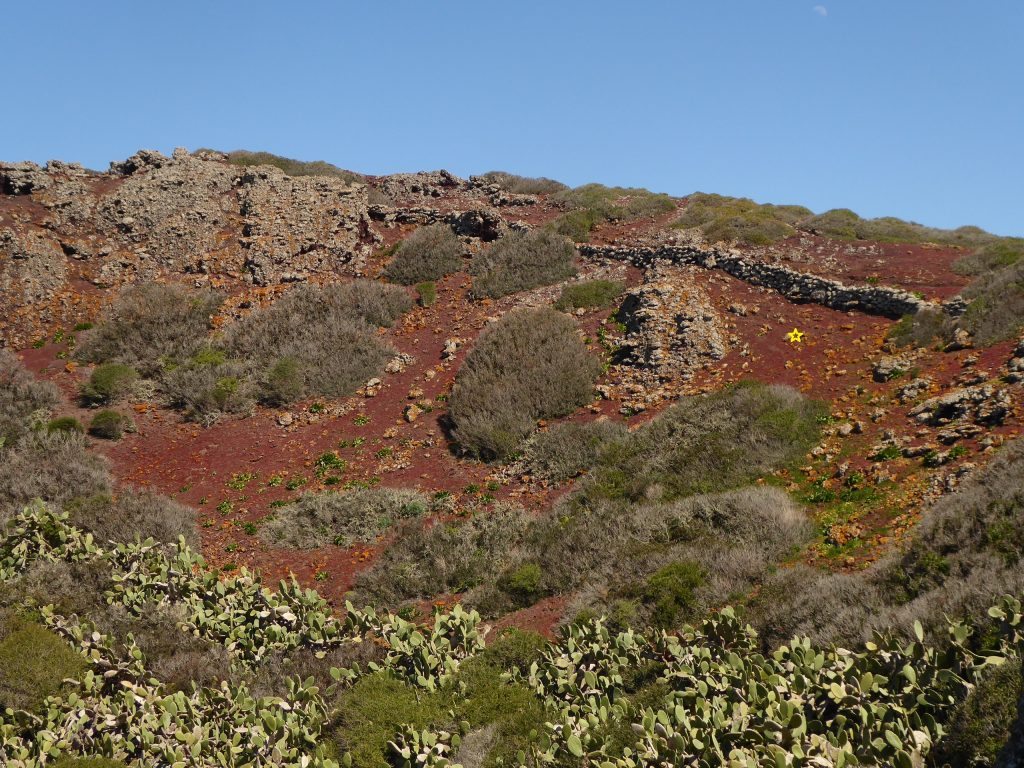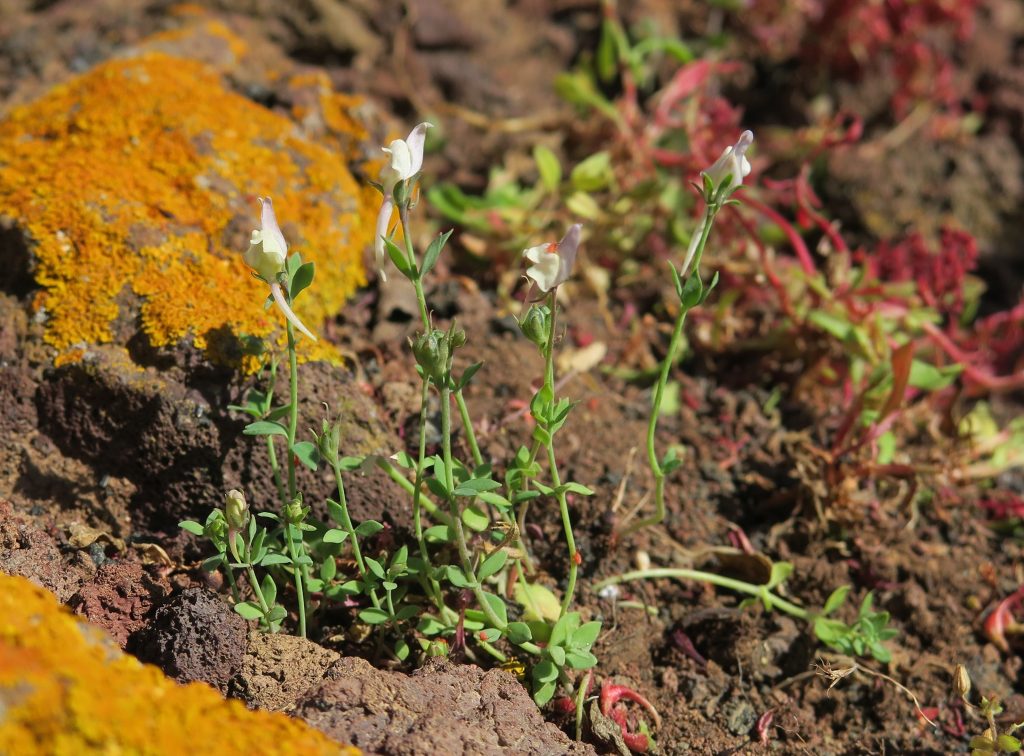Here is a compelling account of the monitoring and strengthening actions of the populations of Linaria pseudolaxiflora carried out in recent weeks by the technical-scientific team of UniCatania.
After a month of waiting due to the stormy sea, UNICT manages to land on the island of Linosa to carry out the third monitoring of the natural population of Linaria pseudolaxiflora and carry out the first strengthening intervention with plants propagated from seeds at the laboratories of the Banca del Germplasm from the University of Catania.
The monitoring, thanks to the hot season which brought forward the flowering of the species, made it possible to identify over 250 plants in the only known station on the island, inside the crater of Monte Vulcano, an extinct volcanic edifice dating back to the Pleistocene. This data, significantly higher than the two previous monitoring reports, makes it clear how complex it is to estimate a population in an annual species, where the production of plants from one year to the next is closely linked to microclimatic fluctuations.
UNICT researchers also characterized the vegetation and micro-niches in which Linaria thrives, in order to place the plants intended for strengthening the population in the most suitable sites.
The new plants were placed in suitable sites on the edges of the existing population, to expand its extension.
For the strengthening it was decided to use plants from Gozo, since the Linosa population has strong homozygosity, i.e. low genetic diversity, typical of small and isolated populations. The contribution of a more differentiated gene pool, such as the one found in Gozo, allows the Linosa population to increase its resilience by including new alleles.
104 plants were therefore translocated to Monte Vulcano, 24 already adults and in full flowering and 80 still small, in a vegetative state, in order to test the possibilities of survival of translocated specimens in different phenological stages.
An ancient cultivation method, used in the driest areas of Sicily, was also tested on 20 of the young plants. In fact, at the bottom of the hole for planting the plants, a cladode of Opuntia ficus-indica was chopped up, then covered with abundant soil. The cladodes of Opuntia ficus-indica are in fact rich in mucilage which, by retaining soil humidity, facilitate the rooting of planted plants.
The strengthening intervention did not stop at Monte Vulcano. In fact, during the four days of stay on the island, all the reliefs of the island were explored in search of suitable sites to host Linaria pseudolaxiflora. Based on the exposure, the microclimatic conditions and the plant community present, the best site turned out to be Monte Rosso, on which 140 plants were planted.
The results of this first strengthening intervention will be fundamental for planning interventions for subsequent years and for learning from nature how to successfully carry out these operations.
In carrying out the activities in Linosa, the support of the local community was fundamental and with its hospitality, helpfulness and knowledge of the area contributed crucially to the success of the operation.
The researchers, tired and hot after a day of work, were even sent by the local community to share dinner in honor of St. Joseph, and took the opportunity to promote the SEEDFORCE project. Once the celebrations were over, three seedlings of Linaria pseudolaxiflora were raffled off, together with other gifts, whose care will be taken care of by the lucky winner: Mr. Felice.
